
A patriot force clung grimly to the hill's heights as red-jacketed British troops charged up the slope. Not far away, Charlestown lay in flames. Seven-year-old John Quincy Adams watched in fearful awe. He and his mother, Abigail Adams, had a distant view of the raging battle from a hill near their home in Braintree, Massachusetts.
It was June 1775. Friends and relatives soon fled Boston to take refuge in the Adams home. John Quincy was too young to fight in the Revolutionary War (1775-1783), but he was old enough to understand that for the Americans to succeed, sacrifices would be necessary. For the Adamses, those sacrifices started at home.
John Quincy Adams was born on July 11, 1767, in Braintree. His father, John Adams, was a leading American patriot. As a young attorney, John had become involved in Boston politics. He was a strong supporter of American independence from Great Britain. In 1774, he represented Massachusetts as a delegate to the First Continental Congress in Philadelphia. His work with the other colonists was dangerous. They all risked being hanged for treason.
Although John often was away from home, he always made time to oversee his children's education from afar. "Take care that they don't go astray," he wrote to Abigail. "Cultivate their minds. . . fix their attention upon great and glorious objects." Under his mother's careful tutoring, John Quincy explored mathematics, history, science, poetry, and Latin.
この記事は Cobblestone American History Magazine for Kids の October 2022 版に掲載されています。
7 日間の Magzter GOLD 無料トライアルを開始して、何千もの厳選されたプレミアム ストーリー、9,000 以上の雑誌や新聞にアクセスしてください。
すでに購読者です ? サインイン
この記事は Cobblestone American History Magazine for Kids の October 2022 版に掲載されています。
7 日間の Magzter GOLD 無料トライアルを開始して、何千もの厳選されたプレミアム ストーリー、9,000 以上の雑誌や新聞にアクセスしてください。
すでに購読者です? サインイン
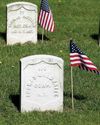
Putting the Pieces Together
Americans needed to begin to put the past behind them, come together, and plan for the future in the spring of 1865. But Abraham Lincoln, the man best equipped to lead them and who had hoped to restore the country as smoothly and peacefully as possible, had been assassinated.
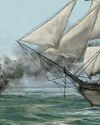
LAST SHOTS
The last Confederate forces in the Civil War didn’t surrender in the spring of 1865 or on a battlefield.
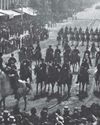
AND IN OTHER 1865 NEWS
A group of African Americans stop at the White House’s annual public reception on January 1, where they shake hands with President Abraham Lincoln.
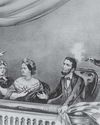
A Plot to Kill President the
For several months, actor John Wilkes Booth’s band of conspirators had plotted to capture President Abraham Lincoln and hold him hostage in exchange for Confederate prisoners.
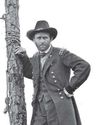
Let the Thing Be Pressed
In June 1864, Union Lieutenant General Ulysses S. Grant began a nearly 10-month campaign in Virginia.
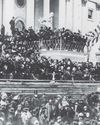
HEALING THE NATION
President Abraham Lincoln took the oath of office for the second time on March 4, 1865.

A Helping Hand
The spring season is hard in any agricultural society. Plants and animals are too small to eat.
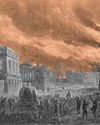
WAR SHERMAN-STYLE
As far as Union Major General William T. Sherman was concerned, the Civil War had gone on long enough.
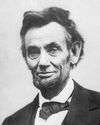
PEACE TALKS
The fall of Fort Fisher made clear that the Confederacy’s days were numbered. Southerners were tired and hungry.
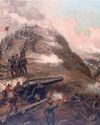
FORT FISHER'S FALL
Outnumbered Confederate soldiers inside Fort Fisher were unable to withstand the approach of Union troops by land and the constant Union naval bombardment from the sea.